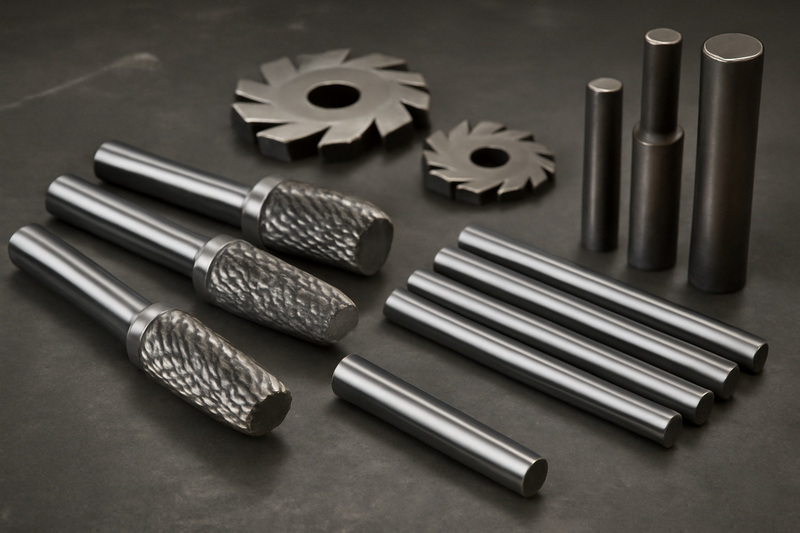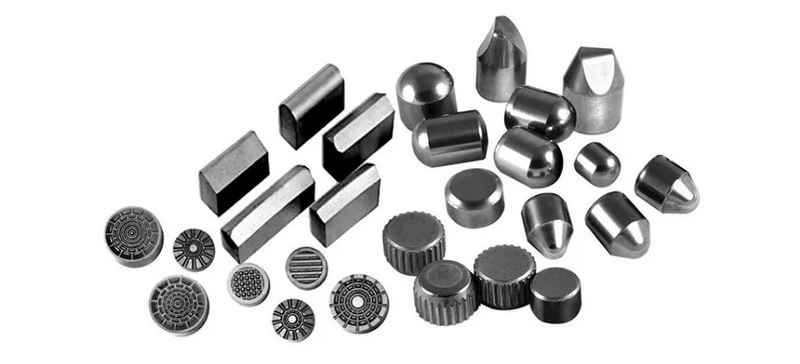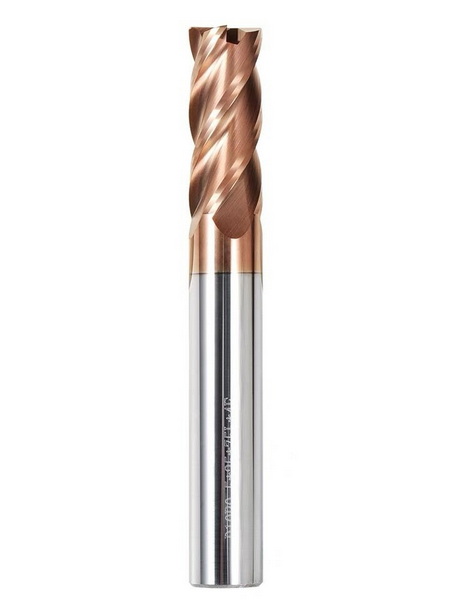Content Menu
● Understanding Rotary Pressing Carbide Products
>> What Are Rotary Pressing Carbide Products?
>> Manufacturing Process of Rotary Pressing Carbide Products
● Applications of Rotary Pressing Carbide Products
>> Industrial Applications
>> Military and Defense
>> Metallurgy and Mining
>> Construction and Engineering
>> Medical and Dental Industry
● Types of Rotary Pressing Carbide Products
>> Carbide Rotary Burrs
>> Carbide Rods and Bars
>> Rotary Cutters and Punches
● Advantages of Rotary Pressing Carbide Products
● Advanced Manufacturing Techniques in Rotary Pressing Carbide Products
● Environmental and Economic Benefits
● Challenges and Future Trends
● Case Studies of Rotary Pressing Carbide Product Applications
>> Automotive Industry
>> Aerospace Sector
>> Mining and Drilling Innovations
● Conclusion
● FAQ
>> 1. What materials are rotary pressing carbide products typically made from?
>> 2. How does rotary pressing differ from other pressing methods in carbide manufacturing?
>> 3. What industries benefit the most from rotary pressing carbide products?
>> 4. Can rotary pressing carbide products be customized for specific applications?
>> 5. What maintenance is required for tools made from rotary pressing carbide products?
Rotary pressing carbide products are high-precision tools made primarily from tungsten carbide, a material known for its exceptional hardness and wear resistance. These products are manufactured using advanced powder metallurgy techniques, including pressing and sintering, to form durable shapes used in various industrial applications. This article explores what rotary pressing carbide products are, their manufacturing process, and their extensive uses across multiple sectors such as industrial manufacturing, military, metallurgy, petroleum drilling, mining, and construction.

Understanding Rotary Pressing Carbide Products
What Are Rotary Pressing Carbide Products?
Rotary pressing carbide products are components or tools created by pressing tungsten carbide powder into specific shapes using rotary press machines, followed by sintering to solidify and harden the material. The rotary pressing method involves a continuous or semi-continuous pressing process that efficiently forms carbide rods, burrs, cutters, and other shapes with high precision and consistency. These products are essential in industries requiring tools that withstand extreme wear, high temperatures, and mechanical stresses.
Manufacturing Process of Rotary Pressing Carbide Products
The production process typically includes:
- Powder Mixing: Tungsten carbide powder is mixed with a binder such as cobalt to ensure uniformity.
- Rotary Pressing: The mixed powder is pressed into molds using a rotary press machine, which applies pressure continuously or cyclically to form the desired shape.
- Sintering: The pressed parts are heated at high temperatures (above 1400°C) to bond the particles, resulting in a dense, hard structure.
- Grinding and Finishing: Precision grinding sharpens the cutting edges and refines dimensions using diamond grinding wheels.
- Optional Coating: Some products receive coatings to enhance wear resistance and performance.
This method allows for mass production of carbide tools like rods, burrs, punches, and rotary cutters with excellent wear resistance and mechanical strength.
Applications of Rotary Pressing Carbide Products
Rotary pressing carbide products serve a wide range of functions across various industries due to their durability, hardness, and precision.
Industrial Applications
- Metalworking and Machining: Carbide rotary burrs and cutters are used for shaping, grinding, deburring, and finishing metals such as steel, stainless steel, cast iron, and non-ferrous metals. They enable precise material removal and surface smoothing in automotive, aerospace, and manufacturing sectors.
- Tool Manufacturing: Carbide rods produced by rotary pressing are further processed into milling cutters, drills, reamers, and other cutting tools. These tools operate at high speeds and endure heavy impacts in metal cutting and forming processes.
- Mold and Die Making: Carbide products are used to manufacture molds and dies for wire drawing, bolt and nut production, and other fastener manufacturing, replacing traditional steel molds due to superior wear resistance.
Military and Defense
Rotary pressing carbide tools are employed in manufacturing precision components and wear-resistant parts for military hardware, where toughness and reliability under extreme conditions are critical.
Metallurgy and Mining
- Drilling and Mining Tools: Carbide rotary burrs and rods are essential in making rock drilling bits, mining tools, and wear-resistant parts that handle abrasive and high-impact environments in mining and petroleum drilling.
- Petroleum Drilling: Carbide products are used to manufacture drill bits and cutting tools that can withstand the harsh conditions of oil and gas exploration, including high pressure and temperature.
Construction and Engineering
- Cutting and Shaping Tools: Carbide rotary cutters and burrs are used in construction for cutting hard materials and shaping metal components.
- Wear-Resistant Parts: Components made from carbide are used in heavy machinery and equipment that require long-lasting wear resistance.
Medical and Dental Industry
Rotary carbide burrs are also widely used in dental procedures for precise cutting, shaping, and preparation of crowns and other dental restorations due to their fine cutting ability and durability.
Types of Rotary Pressing Carbide Products
Carbide Rotary Burrs
These are rotary cutting tools with various shapes (cylindrical, tree-shaped, spherical) used for grinding, shaping, and deburring. They are essential in metalworking, woodworking, jewelry making, and even dental applications.
Carbide Rods and Bars
Pressed carbide rods serve as raw materials for manufacturing cutting tools such as end mills, drills, and reamers. These rods come in solid or hollow forms and are pressed using rotary, die, or isostatic pressing methods.
Rotary Cutters and Punches
Rotary carbide cutters are used for cutting non-woven fabrics, paper, and other materials with high precision and long tool life. Punches made from carbide are used in rotary press machines for powder forming and other pressing operations.

Advantages of Rotary Pressing Carbide Products
- Exceptional Hardness and Wear Resistance: Tungsten carbide is one of the hardest materials after diamond, providing superior durability.
- High Precision: Rotary pressing ensures consistent shape and size for tools requiring tight tolerances.
- Long Tool Life: Carbide tools last significantly longer than steel tools, reducing downtime and replacement costs.
- Versatility: Suitable for machining a wide range of materials including hard metals, plastics, composites, and ceramics.
- Efficiency: High-speed operation capability improves productivity in industrial processes.
Advanced Manufacturing Techniques in Rotary Pressing Carbide Products
Recent advancements in rotary pressing technology have introduced automation and computer numerical control (CNC) systems to enhance precision and efficiency. These improvements allow for tighter tolerances and more complex shapes, expanding the range of possible applications. Additionally, innovations in binder materials and sintering atmospheres have improved the toughness and thermal stability of carbide products.
Automation enables continuous monitoring and adjustment during pressing, reducing defects and improving yield. CNC-controlled grinding and finishing processes ensure that cutting edges and dimensions meet stringent specifications, essential for high-performance tools.
Environmental and Economic Benefits
Rotary pressing carbide products contribute to sustainability by reducing material waste during manufacturing due to the precision of the pressing process. The long lifespan of carbide tools also means fewer replacements, lowering overall resource consumption and costs. Economically, the efficiency of rotary pressing enables high-volume production at competitive prices, making advanced carbide tools accessible to a broader market.
The durability of carbide tools reduces the need for frequent tool changes, minimizing machine downtime and energy consumption. Furthermore, recycling of carbide scrap and powders is increasingly common, further enhancing environmental benefits.
Challenges and Future Trends
Despite their advantages, rotary pressing carbide products face challenges such as brittleness under extreme impact and the high cost of raw materials. Tungsten and cobalt, key raw materials, are subject to market fluctuations and supply constraints.
Research is ongoing to develop composite materials and coatings that enhance toughness without compromising hardness. For example, nano-structured carbide composites and advanced coatings like titanium nitride (TiN) or diamond-like carbon (DLC) improve wear resistance and reduce friction.
Future trends include integrating smart sensors into carbide tools for real-time monitoring of wear and performance. Such "smart tools" enable predictive maintenance, reducing unexpected downtime and improving operational efficiency. Additive manufacturing techniques are also being explored to complement rotary pressing for complex geometries.
Case Studies of Rotary Pressing Carbide Product Applications
Automotive Industry
Carbide rotary burrs are extensively used in engine manufacturing for precise machining of cylinder heads and valve seats, improving engine efficiency and longevity. The durability of carbide tools reduces production interruptions and maintenance costs. Additionally, carbide cutting tools enable the machining of lightweight alloys used in modern vehicles, contributing to fuel efficiency.
Aerospace Sector
In aerospace, rotary pressing carbide products are critical for machining high-strength alloys used in aircraft components. Their ability to maintain sharpness and resist heat ensures high-quality finishes and safety standards. Carbide tools enable the production of complex parts with tight tolerances, essential for aerodynamic performance and structural integrity.
Mining and Drilling Innovations
New designs of carbide drill bits produced by rotary pressing have enhanced penetration rates and durability, significantly improving mining productivity and reducing operational costs. These bits withstand abrasive rock formations and high-impact forces, extending service life and reducing replacement frequency.
Conclusion
Rotary pressing carbide products are indispensable in modern industry due to their superior hardness, precision, and durability. Manufactured through advanced powder metallurgy techniques, these products find extensive applications in metalworking, military, mining, petroleum drilling, construction, and medical fields. Their ability to withstand harsh conditions and maintain performance over time makes them essential tools and components in high-tech manufacturing and processing environments. As technology advances, rotary pressing carbide products continue to evolve, offering even greater efficiency and reliability.

FAQ
1. What materials are rotary pressing carbide products typically made from?
They are primarily made from tungsten carbide powder mixed with a binder such as cobalt, which is then pressed and sintered to form hard, wear-resistant tools.
2. How does rotary pressing differ from other pressing methods in carbide manufacturing?
Rotary pressing involves continuous or semi-continuous pressing of powder into molds, allowing efficient mass production and consistent quality, unlike die pressing or isostatic pressing which may be batch processes.
3. What industries benefit the most from rotary pressing carbide products?
Key industries include metalworking, automotive, aerospace, military, mining, petroleum drilling, construction, and medical/dental sectors due to the products' durability and precision.
4. Can rotary pressing carbide products be customized for specific applications?
Yes, manufacturers can tailor the grade, shape, and size of carbide products to meet specific requirements such as hardness, toughness, and cutting geometry.
5. What maintenance is required for tools made from rotary pressing carbide products?
Proper handling, correct usage speeds, and occasional sharpening or grinding are needed to maintain tool performance and extend service life.
















